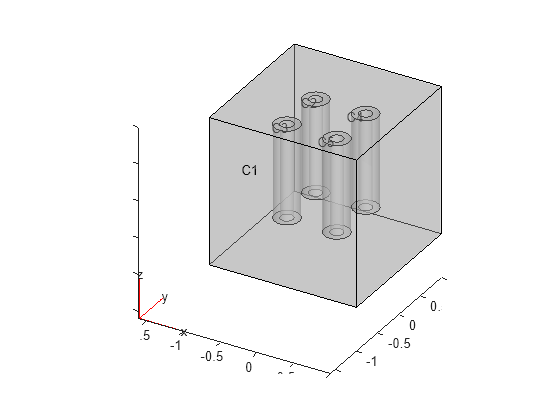addCell
Syntax
Description
g3 = addCell(g1,g2)g1 using all cells of
g2. All cells of the geometry g2 must be
contained inside one cell of the geometry g1. Ensure that the
geometries do not have enclosed cavities and do not intersect one another.
The combined geometry contains cells from both geometries. The cells from
g1 retain their original IDs, while the cells from
g2 are numbered starting with N+1, where
N is the number of cells in g1.
Note
After modifying a geometry, always call generateMesh to ensure a
proper mesh association with the new geometry.



